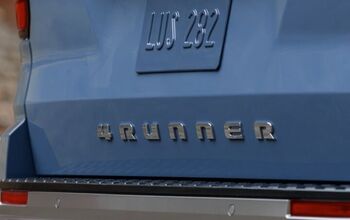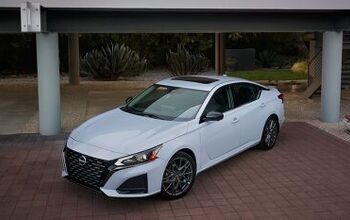U.S. DoT To Mandate Vehicle to Vehicle Telematics for Crash Avoidance, Sparking Privacy Concerns
U.S. Transportation Secretary Anthony Foxx told Automotive News that U.S. regulators will soon begin working on telematics regulations that will require new cars and light trucks sold in the United States to be equipped with systems for vehicle to vehicle communications. The impetus is safety, as the telematic systems can be integrated with semi-autonomous crash avoidance systems.
Foxx didn’t set a date when the mandate would become effective, but he made it clear that he supports the technology, calling it a “moon shot” and saying that it could prevent 70 to 80 percent of crashes involving drivers that are not impaired.
“Keeping drivers safe is the most important advantage of V2V, but it’s just one of many,” Foxx said. “V2V can also help reduce congestion and save fuel. The potential of this technology is absolutely enormous.”
Car companies like GM, Toyota and VW, have been working together, along with government regulators and engineers for more than a decade on standards for what some have called “the internet of cars” or “connected cars”.
That connection would take place over a dedicated wireless wireless frequency called Dedicated Short-Range Communications, or DSRC, which would be separate from the current 3G and 4G cellular networks that currently allow Internet-based services in your car.
The Alliance of Automobile Manufacturers, a lobbying group, was reserved in its reaction. A spokesperson for the Alliance told AN that it recognizes the benefits of DSRC technology, but that there are issues that need to be resolved and that the organization’s members prefer a voluntary standard to a mandate.
“DSRC radios may play a larger role in future road safety, but many pieces of a large puzzle still need to fit together,” the AAM said in a statement. “We need to address security and privacy, along with consumer acceptance, affordability, achieving the critical mass to enable the ‘network effect’ and establishment of the necessary legal and regulatory framework.”
Car companies are starting to roll out connected cars in Europe, with the first vehicles hitting the road sometime next year. London-based consultancy ABI Research predicted last year that global acceptance of the technology in new vehicles will grow from 10 percent in 2018 to 70 percent by 2027.
DSRC works much like the Wi-fi used by personal computers and other electronic devices, and can handle data from the cameras and sensors that have proliferated in today’s cars. Vehicles equipped with DRSC chips would receive and process signals from nearby DRSC-enabled cars to learn their location, direction and speed. If a driver does not react to an impending collision, the car could then sound a warning or apply the brakes automatically to prevent an accident.
Regulators say that the system could also process signals from smartphones and other devices carried by pedestrians, cyclists and drivers of older cars. Aftermarket transmitters for retrofitting are also anticipated, though there is no word yet on making them mandatory on all vehicles, not just a new factory standard on new cars.
A$25 million study conducted on the streets of Ann Arbor, Michigan proved that telematics products from different vehicle manufacturers and suppliers will communicate with one another. The government agency said that a published report will be released for public comment in the next few weeks.
The move to embrace DSRC technology is part of a shift in strategy by regulators from passive safety systems to more active technologies. As cars and light trucks have gotten safer, finding areas to improve accident survival rates has become harder.
“While the auto industry has made great strides to reduce fatalities and injuries after a crash,” said Scott Belcher, president of the Intelligent Transportation Society of America, “the next giant leap is to enable real-time communication between vehicles and with the world around them so crashes can be avoided in the first place.”
Currently automakers use a differing variety of warning sounds and symbols in their accident avoidance systems. Mercedes-Benz has flashing lights, General Motors has patented a vibrating seat that warns drivers, and Ford uses a haptic steering wheel. The government could implement standardizing regulations on those warnings.
Privacy advocates have concerns because regulators and automakers are also thinking of other ways that DSRC could be used for purposes besides safety. Richard Bishop, who led the DOT’s vehicle automation program in the 1990s, says that the new wireless technology could be used could be used to collect tolls, or to tax drivers based on the number of miles they travel. As the use of hybrids and EVs grows, governments are looking to alternatives to taxes on gasoline and diesel.
In addition to privacy as related to civil liberties and the government possibly tracking motorists’ movements, DSRC creates a new opportunities for hackers and identity thieves.
U.S. Senate Commerce Committee Chairman Jay Rockefeller, D-W.Va., asked, in a May 2013 hearing whether wireless communications could potentially allow “some 14-year-old in Indonesia” to “shut your car down.”
Considering that the European Union is indeed considering mandating equipment that would let police and other authorities to disable your car by remote control, the senator’s concerns may not be hyperbolic, though civil libertarians might be more concerned about potential abuse by government agents than by hackers in Indonesia.
More by TTAC Staff
Latest Car Reviews
Read moreLatest Product Reviews
Read moreRecent Comments
- Bkojote @Lou_BC I don't know how broad of a difference in capability there is between 2 door and 4 door broncos or even Wranglers as I can't speak to that from experience. Generally the consensus is while a Tacoma/4Runner is ~10% less capable on 'difficult' trails they're significantly more pleasant to drive on the way to the trails and actually pleasant the other 90% of the time. I'm guessing the Trailhunter narrows that gap even more and is probably almost as capable as a 4 Door Bronco Sasquatch but significantly more pleasant/fuel efficient on the road. To wit, just about everyone in our group with a 4Runner bought a second set of wheels/tires for when it sees road duty. Everyone in our group with a Bronco bought a second vehicle...
- Aja8888 No.
- 2manyvettes Since all of my cars have V8 gas engines (with one exception, a V6) guess what my opinion is about a cheap EV. And there is even a Tesla supercharger all of a mile from my house.
- Cla65691460 April 24 (Reuters) - A made-in-China electric vehicle will hit U.S. dealers this summer offering power and efficiency similar to the Tesla Model Y, the world's best-selling EV, but for about $8,000 less.
- RHD The analyses above are on the nose.It's a hell of a good car, but the mileage is reaching the point where things that should have worn out a long time ago, and didn't, will, such as the alternator, starter, exhaust system, PS pump, and so on. The interiors tend to be the first thing to show wear, other than the tires, of course. The price is too high for a car that probably has less than a hundred thousand miles left in it without major repairs. A complete inspection is warranted, of course, and then a lower offer based on what it needs. Ten grand for any 18-year-old car is a pretty good chunk of change. It would be a very enjoyable, ride, though.


































Comments
Join the conversation
I have some friends who hack... (Pictures world in a few years). *One of my friends is driving home from school in a snow storm without us.* *My Friend Next to Me: (Atum), why is he driving off without us? *Pulls out tablet and hacks database.* *Friend's car stops on an icy hill, and it rolls down.*
I am very much into remote control cars but I don't like the idea of having real/actual size cars running around remotely controlled by another person other than me. How about if the other car is a very old model that doesn't quite respond well to the remote control Vehicle to Vehicle Telematics system?